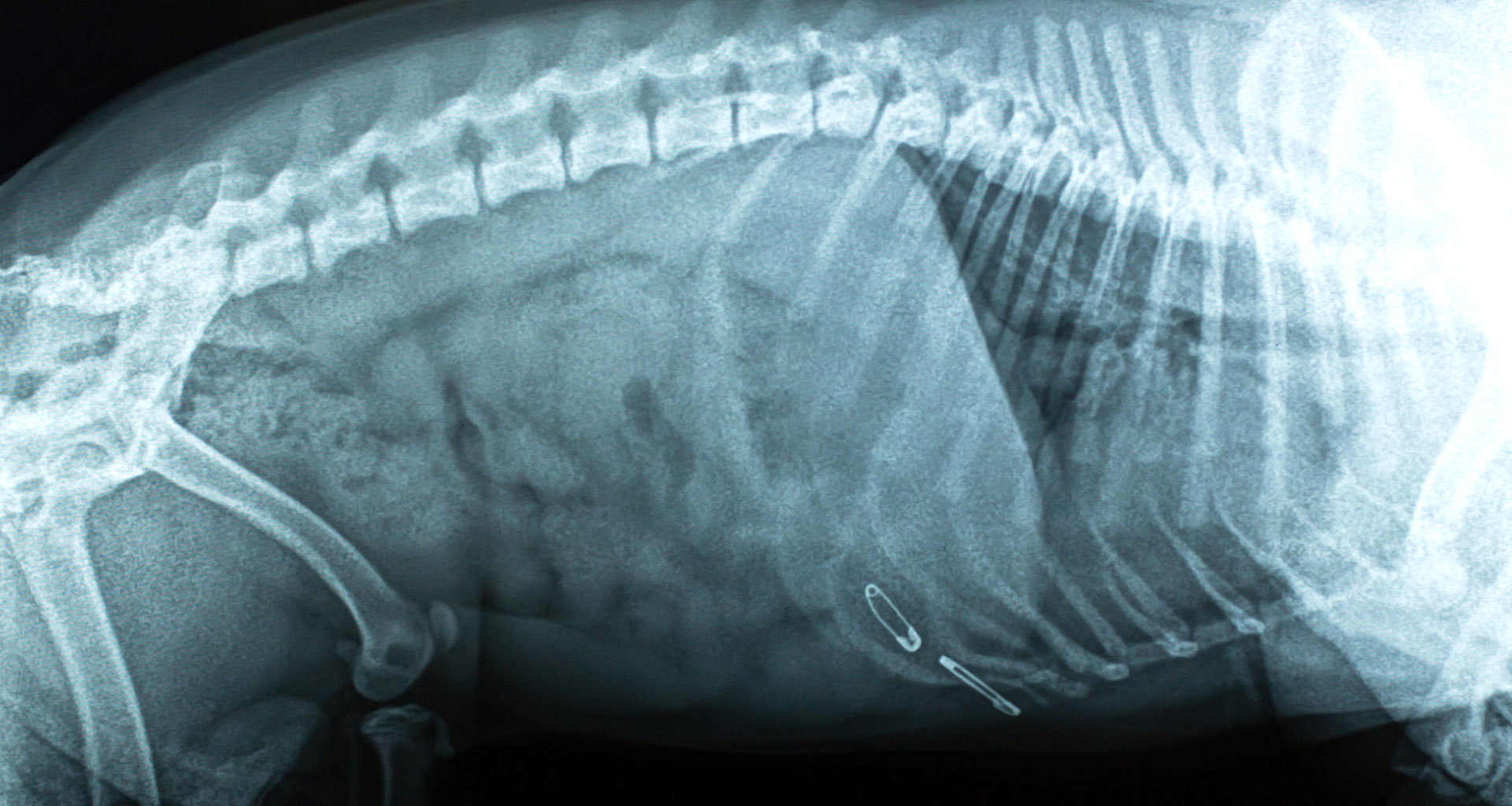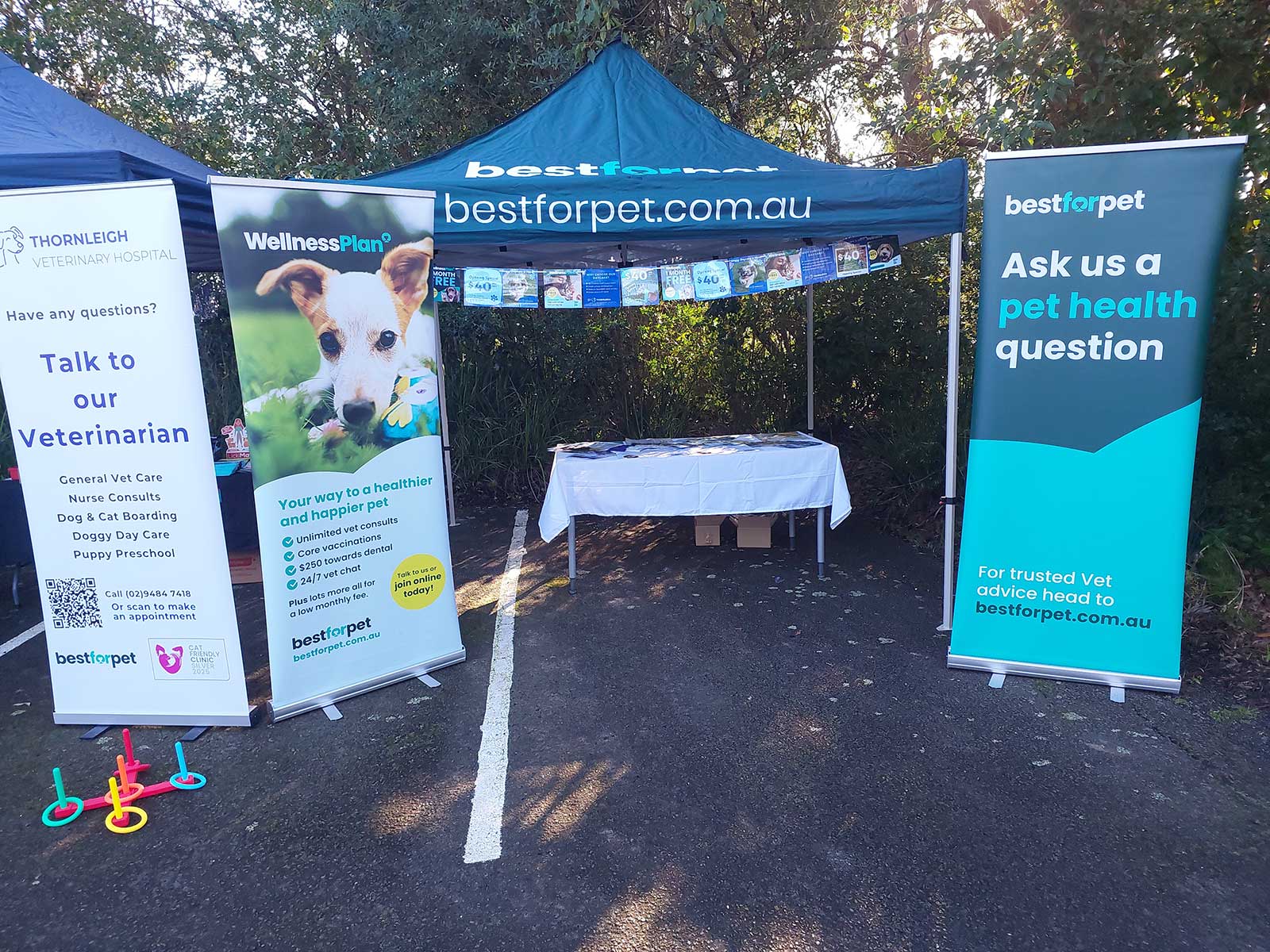Occasionally dogs and even cats will inadvertently or intentionally swallow something they shouldn’t. It might be part of a toy or wrapping associated with food or it could be something more obscure such as a rock or hair elastic. Whatever the object is, it is unlikely to be digestible and can get stuck in the gastrointestinal tract causing significant damage to the lining of the tract and even leading to rupture of the tract which is rapidly life threatening.
If we are suspicious of a foreign object being ingested, we will very likely recommend x-rays. These may be repeated over a couple of hours or even days if we are unsure whether the object is causing an obstruction or moving through the intestinal tract. If we need more information, we may also recommend an ultrasound. If we are concerned the object is causing an obstruction, we will recommend removal of the foreign object via the methods listed below.
Oesophageal foreign bodies
Occasionally large objects will get stuck in the oesophagus (the foodpipe that runs through the chest). The most common object to get stuck here is a bone that has been swallowed whole. As you can imagine this is very uncomfortable for the animal and can lead to choking behavior, constant coughing, gagging or vomiting. These objects must be removed urgently, and this is usually performed via endoscopy which is when the animal is put under general aneasthetic and a camera is passed down the oesophagus to visualize the object. A small “grabber” is then inserted, using the camera to guide it, and the object is grasped and pulled up out of the animal’s mouth. If this is not possible sometimes the object is pushed down into the stomach for retrieval via surgery. Damage to the oesophagus may occur but it is relatively thick and usually heals without issue. Occasionally neither option is successful and chest surgery is required to remove the object. This is a major surgery with considerable risks that your vet will discuss with you.
Stomach foreign bodies
Quite often foreign objects are swallowed but are then too large to continue beyond the stomach into the small intestines. They end up bouncing around the stomach causing intermittent vomiting and damage to the lining. Stomach foreign bodies are usually retrieved via surgery. This is a reasonably straight forward surgery whereby the surgeon opens the pet’s abdomen, makes a cut in the stomach wall and retrieves the object. If significant damage has been done to the stomach wall some of the stomach may need to be removed so only healthy tissue is left. The stomach is then stitched closed, the rest of the abdomen checked for other foreign bodies then the wound is closed. Complications are reasonably uncommon but may include leakage of stomach contents from the incision site (leading to infection in the abdomen) or bleeding either during or after the surgery. Occasionally, despite our best diagnostic efforts we will find no foreign object and will close the wound back up again.
Small intestinal foreign bodies
If a foreign object makes it down into the intestinal tract it quite commonly will get stuck in the small intestines due to the small diameter it has to move through. This causes significant damage to the intestines and even leakage or rupture of the intestinal tract. These foreign bodies are almost always removed via surgery. The procedure is much the same as for a stomach foreign body however the object must be located in the intestines and then removed either via a small cut or removing part of the intestines if it is damaged beyond repair. Occasionally if there are multiple objects of a linear object (such as a piece of string) multiple cuts may be required or large amounts of intestines may need to be removed. The complications are like that for a stomach foreign body however the risk of leakage is higher and if intestines are removed there is a risk of the bit that is sewed back together breaking down. For this reason, they are monitored very closely post-operatively.
Very occasionally, damage to the intestines and/or stomach is so severe that it is not repairable. This may occur if the object is large, sharp or has been present for many days. Unfortunately, in these cases the gut cannot be surgically repaired, and euthanasia is recommended whilst the animal is under anaesthetic.
Large intestinal foreign bodies
Occasionally an object will make it all the way to the large intestines and may even be able to be pushed out. Surgeons prefer not to cut into the large intestines if possible due to the large amount of bacteria present so if assistance is required the vet may perform an enema or attempt to massage the item out surgically. If this is not possible cutting into the intestines to retrieve the item is the last resort. Risks are as above.
General post-operative care:
- Patients are usually hospitalized until they are eating again normally.
- They are then sent home on pain relief and usually antibiotics.
- They should be fed a very bland diet (e.g. Hills i/d) with small frequent feeds for a few days then very gradually returned to their usual food over the next week or so.
- Most patients will require a 7-day post-op check to remove stitches and see how they are going.
- Patients will be required to wear an Elizabethan-collar to stop them chewing or licking at their surgical wound.
Prognosis for surgical foreign body removal is good particularly if the item is identified early and the patient is still relatively alert and happy. It is not uncommon for dogs that eat foreign objects to do this on more than one occasion which may lead to multiple surgeries and increased associated risks.


